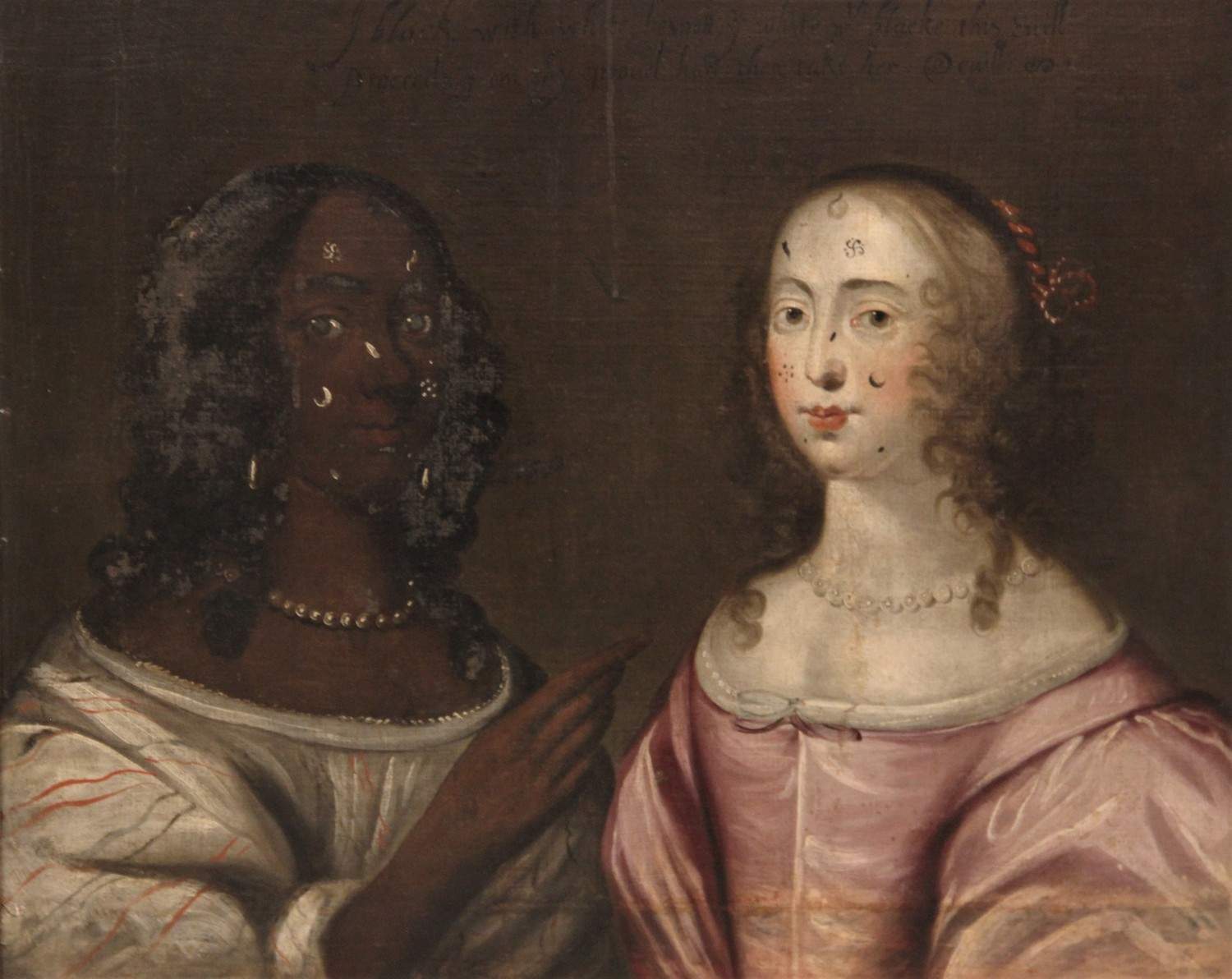UK, government prevents the export of a very rare 17th century painting
A very rare seventeenth-century painting, from the English school (we do not know the author), depicting two women, one dark-skinned and one white, presented with the same status: a valuable and mysterious work, which the British government has decided to notify to prevent it from leaving the UK’s borders. The painting, dating from around 1650, has a valuation of £272,800 (just under 320,000 euros), and shows the two women side by side, dressed in the same clothes, with similar hairstyles and wearing matching jewelry. The depiction of a black woman in a 1650s painting is highly unusual, particularly a work that shows an adult instead of a child, and the government considered blocking it partly because it is considered an object that contributes to the debate on racial and gender identity at the time of its creation.
Another interesting aspect is the presence, on the faces of both women, of so-called beauty patches, an ornament that was particularly in vogue in seventeenth- and eighteenth-century England: they were actual patches that were applied over skin imperfections (pimples, moles, but also sores left behind by serious diseases such as smallpox) to hide them. The fashion for beauty patches ended towards the end of the eighteenth century. The painting seems to condemn the use of these items through an inscription above the two women that states that wearing beauty pat ches is a sin of pride, an opinion prevalent in the 17th century. This moralizing intent gives the painting an affinity with popular woodcut prints of the time, making it clear that the work is allegorical and associating it with satirical verse, pamphlets, and sermons. Further research could reveal how the image relates to contemporary culture and texts, as well as the contexts and purposes for which it may have been created and displayed.
“This fascinating painting,” said the undersecretary for the arts, Lord Parkinson of Whitley Bay, “has so much to teach us about seventeenth-century England, including the important issues of race and gender, which rightly continue to attract attention and research today. I hope that we can find a gallery or museum in the United Kingdom to purchase this painting for the nation so that many more people can participate in the continuing research and discussion about it.”
The decision to block the work, which bears Lord Parkinson’s own signature, follows the opinion of the relevant body on the matter, namely the Reviewing Committee on the Export of Works of Art and Objects of Cultural Interest (RCEWA). The Committee agreed that this is "an extremely rare and fascinating painting,“ reads a note, and that it has ”enormous potential for further research in many fields. The Committee considered the work particularly significant because of its subject matter and early dating, as all comparable paintings are much later."
The Committee made its recommendation on the basis that the painting’s exit from the United Kingdom would be a major loss, according to RCEWA. The export freeze, under the terms of English law, will last until March 9, 2022, and during this period interested buyers can make offers to the current owner. After the period ends, the owners will have a period of 15 working days to consider any offers to purchase the painting at the recommended price of £272,800. The lockout can then be renewed for an additional three months.
The painting was in the collection of Lloyd Tyrell-Kenyon, sixth Baron of Kenyon, who passed away in 2019. It had been in the family collections for at least a century. In June this year it was then sold in an auction at the Trevanion House: starting with an initial estimate of £2-4,000, it was later fetched £220,000 (a record for the house), with bids coming in from all over the world (including Italy).
Image: English School, Allegorical Double Portrait of Two Women (c. 1650; oil on canvas, 64 x 75 cm)
 |
| UK, government prevents the export of a very rare 17th century painting |
Warning: the translation into English of the original Italian article was created using automatic tools. We undertake to review all articles, but we do not guarantee the total absence of inaccuracies in the translation due to the program. You can find the original by clicking on the ITA button. If you find any mistake,please contact us.





























